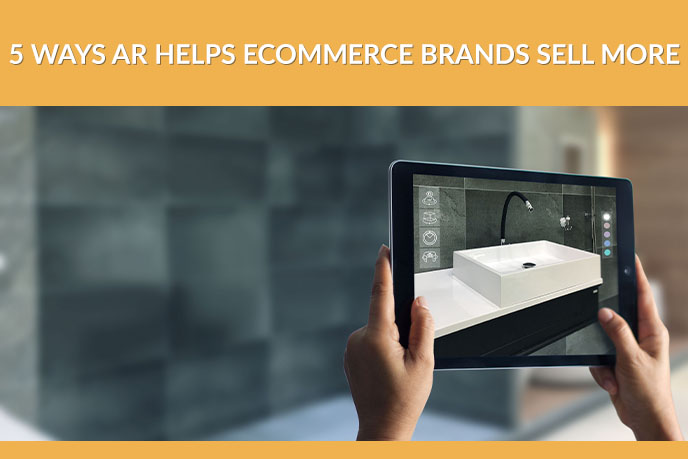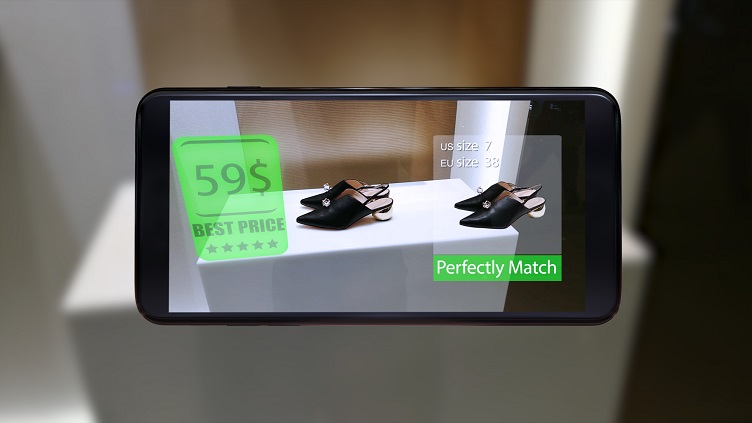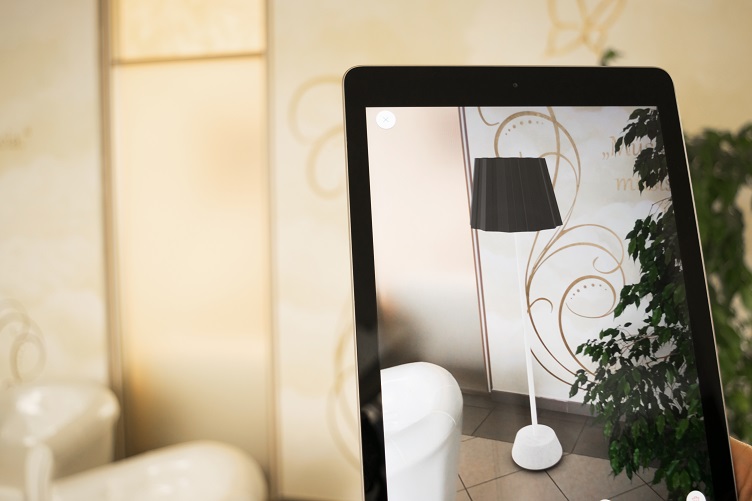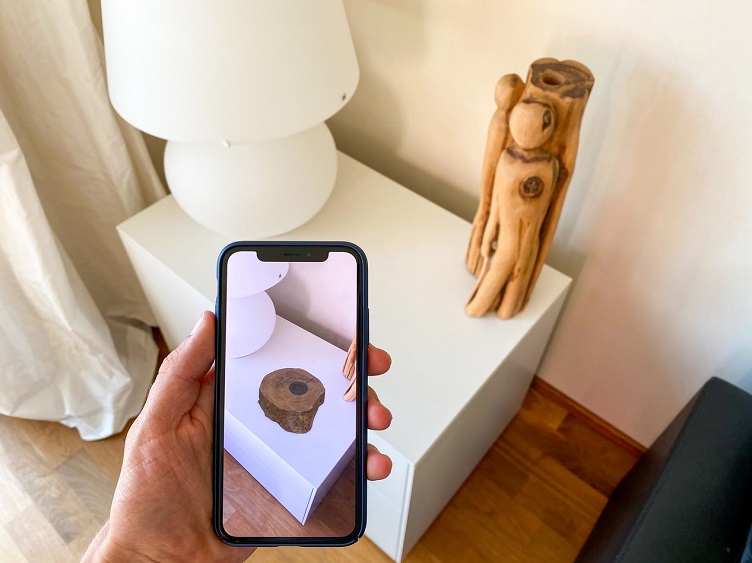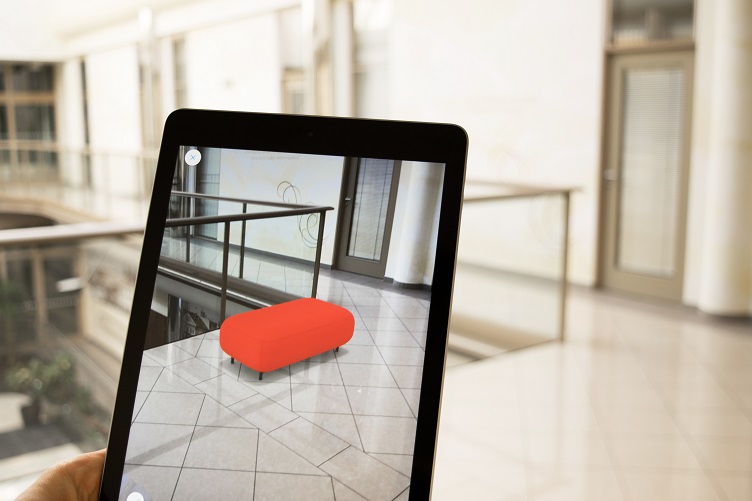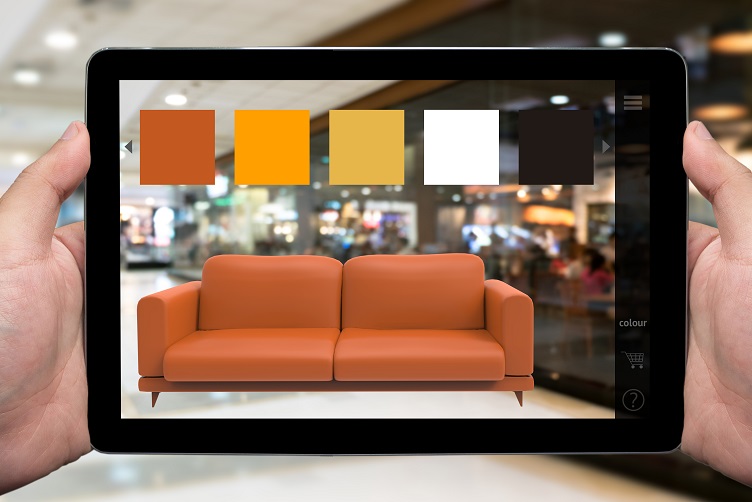AR Product Visualization: How It Helps Ecommerce Brands Sell More
AR product visualization can become a trampoline for the success of an ecommerce business. It can help manufacturers boost sales and outrun their competitors. Which is quite difficult to achieve in ecommerce industry in the current realities. The Internet retail sector is growing by 23% year-to-year. And 95% of all purchases by the year 2040 will be made online. So, the competition in ecommerce is very high. It forces manufacturers to search for powerful tools that can help promote and sell goods in new creative ways. And that’s where AR product visualization comes in handy.
Augmented reality is a technology that allows projecting realistic 3D models of objects onto real environments with the help of smartphones, tablets, or head-mounted displays. Today, AR finds use in lots of areas from medical training to logistics and public safety. So it does in ecommerce — and online shoppers love it. 61% of buyers say that they would rather shop in web stores with AR options than in those without them.
Online retailers use AR in their businesses in different ways. Some provide shopping apps that offer in-home experience so that prospects could see if new furnishings fit their interior. Other offer applications that let shoppers virtually try clothes on by using their smartphone front camera. And these are only a few examples of how AR can help product brands engage customers. It has so much else to offer! So, how exactly does this technology reshape the future of ecommerce? Read up to check out 5 ways AR helps product brands sell more!
#1. AR visualization opens opportunities for engaging shoppers with gamification techniques
Customer engagement is one of the pillars of ecommerce success. That is why marketers create more and more new ways to excite clients. The concept of gamification has been very helpful on this path. And with the advent of AR, brands got an opportunity to turn clients’ shopping experience into an entertaining game.
This was exactly what Airwalk did when they launched their augmented reality marketing campaign — one of the first ones in the world. The brand created digital pop-up stores that were available only at specific geographic locations. Buyers needed to find the right spot, download the GoldRun app, and scan the place. After doing that, they became able to access a virtual AR store offering the limited-edition relaunch of Airwalk Jim shoes. This way, shopping turned into a fun game-like activity.
Such an unusual experience offered by Airwalk positioned them as innovators in the retail industry. The whole campaign resulted in 5 million dollars of revenue and the busiest weekend the e-store had ever had! So, there is no wonder that many companies followed Airwalk’s example and started gamifying shopping experiences for their customers with the help of AR product visualization.
#2. AR simplifies decision-making by explaining the products properly
When choosing an item to buy, prospects analyze different options from logical and emotional perspectives. After having estimated all pros and cons, they come to a final choice. And the preference goes to a manufacturer that managed to show and explain why its product is just a perfect choice to satisfy a prospect’s needs. Therefore, a retailer must aim to become the best at explaining every product they sell. But oftentimes, it is hard to showcase all the benefits of an item online.
And augmented reality can help greatly with achieving this goal. AR product visualization can explain an item’s characteristics and eliminate doubts about buying it. How so? The secret is that AR allows potential buyers to see a product as a part of their life before making a purchase. For example, with Argos’ app, it’s possible to see if new furniture fits a prospect’s home interior. And Gucci’s application allows to virtually try footwear on and see how it looks on a buyer’s feet. This way, a shopper can easily understand if the offered product is the one they need.
#3. AR product visualization helps product brands reduce returns
By allowing shoppers to understand a product better, AR helps online stores not only raise the buyers’ confidence about making a purchase and get more sales. It also aids in reducing the returns of goods. That is because AR provides consumers with an accurate and realistic visualization of products they will get before the purchase is delivered to their door. This eliminates the gap between a buyer’s expectations and reality. And, as a consequence, they feel happy with the purchase and have no reason to send it back to the store. This way, AR product visualization plays into the hands of both shoppers and ecommerce brands, ensuring higher customer satisfaction and lower return rates.
#4. AR retail visualization makes online shopping as convenient as offline
Though the popularity of Internet shopping is rapidly growing, the majority of people still prefer to buy offline. Why so? Customers love brick-and-mortar stores for their neatly arranged shelves, stylish showrooms, and lots of choice in front of one’s eyes. But offline shopping also has disadvantages: it takes a lot of time and effort to get to the place, to roam between shelves, and to wait in a queue of other buyers.
AR product visualization gives the solution to these issues. It allows buyers to enjoy the benefits of brick-and-mortar stores without making a single step outside their house. For this, a person needs to use a special smartphone AR app that projects virtual shelves with goods right on the walls in a buyer’s room. This way, they can explore the assortment of an ecommerce brand, learn the information about the products, and purchase just by clicking on them.
#5. AR opens new opportunities for customization of goods
Modern buyers have high expectations of their purchasing experiences. They want to have an opportunity to customize and buy identity-driven products. So, if a manufacturer wants to stay competitive, they should think of enabling clients to design items to their liking. And AR product visualization is an excellent tool for that.
For example, Vespa, an Italian manufacturer of scooters, already took advantage of AR to provide customers with customization options. They offer a prospect to download the Vespa AR app and scan the company’s ads in a magazine. Then, the unique experience begins. The app allows a client to choose color and seat options, take their digital Vespa for a spin, find the nearest dealer to buy a vehicle, and even share the image of their self-designed scooter in social media. Such an experience engages prospects with the brand and makes them more likely to make a purchase.
AR product visualization is a real boon for ecommerce businesses. When applied creatively and in style, it gives numerous benefits. AR visualization can turn shopping into an exciting game, increasing customer engagement. It helps perfectly explain the product, helping prospects make purchasing decisions faster and reducing return rates. AR also makes Internet shopping at home as convenient as an in-store experience. On top of that, it allows for customizing products, satisfying the customers’ demand for a personalized approach.
Want to give your clients an unforgettable shopping experience with AR visualization and boost sales of your brand? Order professional 3D modeling services to get the best 3D models of products for augmented reality apps!
Let us know if you’ve got an interesting project and want to work together!

